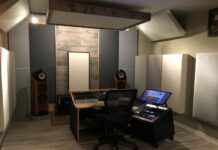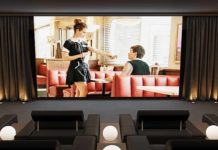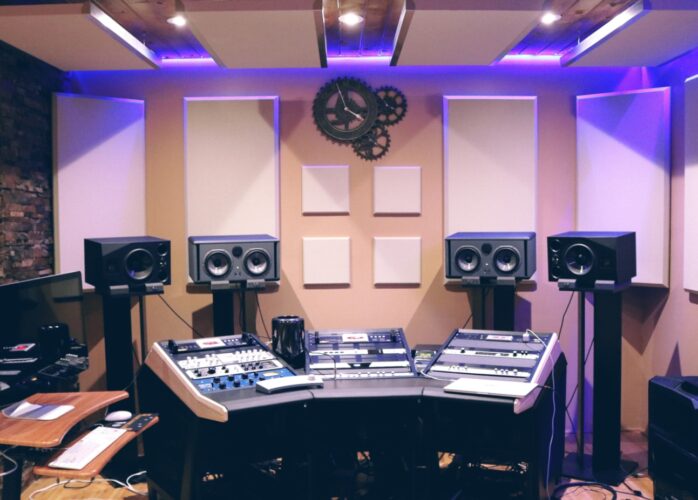
Creating a professional recording studio involves more than just having top-notch equipment and talented musicians. One of the critical aspects that often go unnoticed but significantly impacts the quality of recordings is the acoustic treatment of the space. In a bustling city like Chicago, where music thrives in every corner, ensuring that your recording studio has impeccable sound quality is essential. This article delves into the intricacies of selecting the right acoustic solutions for a professional recording studio in Chicago.
The Importance of Acoustic Treatment
Acoustic treatment involves manipulating the sound reflections, absorptions, and diffusion within a space to achieve a balanced and controlled sonic environment. In a recording studio, this becomes crucial as it directly affects how sound is captured and reproduced. Unwanted reflections, flutter echoes, and resonances can color the recordings and lead to distorted sound. For professional recording studios in Chicago finding the right acoustic solutions is key to producing high-quality recordings.
Assessing the Space
Before diving into selecting acoustic solutions, it’s essential to understand the characteristics of the studio space. Consider factors such as the room’s dimensions, shape, construction materials, and existing acoustic properties. A professional acoustic consultant can conduct measurements and assessments to provide valuable insights into the room’s acoustic behavior. This evaluation forms the foundation for choosing the appropriate solution.
Types of Acoustic Solutions
Bass Traps
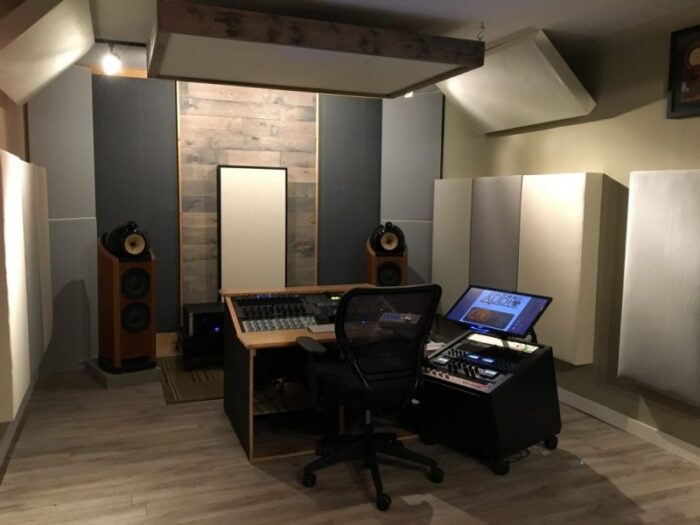
Bass traps are an essential component of acoustic treatment in recording studios. They specifically target low-frequency issues that often manifest as boomy or muddy sounds in recordings. In a city as vibrant as Chicago, where external urban sounds can infiltrate the studio space, bass traps serve a dual purpose. Not only do they mitigate unwanted low-frequency resonances, but they also aid in isolating the studio from external vibrations. By strategically placing bass traps in corners and along walls, the studio can achieve a clean and well-defined low-end response, allowing for accurate bass monitoring and recording.
Absorption Panels
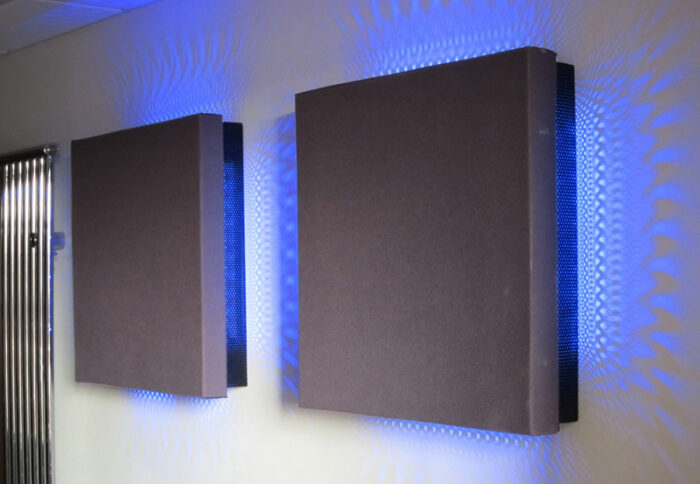
Absorption panels play a crucial role in controlling sound reflections within a recording space. These panels are designed to absorb sound energy, thereby reducing the intensity of reflections and minimizing unwanted echoes. To create a controlled and balanced acoustic environment, absorption panels can be strategically placed on walls, ceilings, and even corners. In Chicago’s bustling music scene, where diverse genres thrive, proper use of absorption panels can help maintain clarity and fidelity in recordings, ensuring that the studio’s acoustic signature doesn’t interfere with the music being produced.
Diffusers
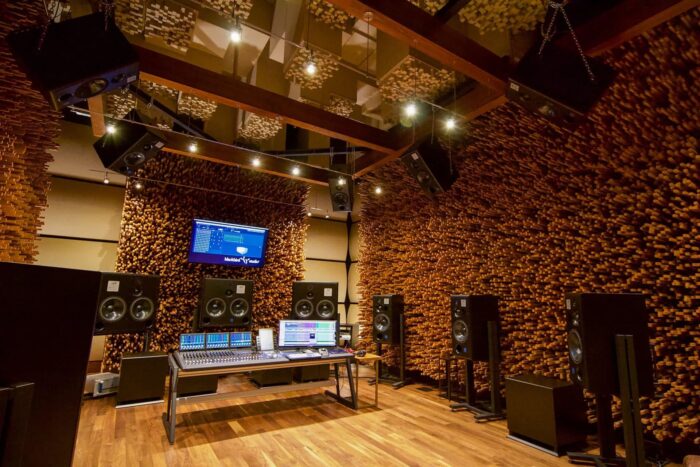
Diffusion panels offer a unique approach to managing sound reflections. Unlike absorption, diffusion scatters sound waves in various directions, preventing them from bouncing directly back to the microphone. This scattering creates a sense of spaciousness in recordings, which is particularly valuable when capturing natural and dynamic sound. As Chicago’s recording studios cater to a wide range of musical genres, diffusers can enhance the overall sonic experience by adding depth and dimension to recordings. By strategically placing diffusers on reflective surfaces, engineers can craft a sonic environment that enhances the music’s character and richness.
Isolation Devices
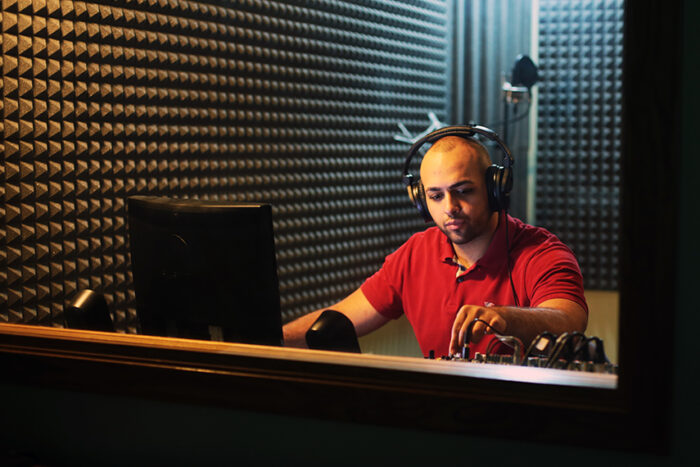
In a city as dynamic as Chicago, managing external noise sources is a critical concern for recording studios. Isolation devices, such as resilient mounts for walls and floors, become indispensable tools in achieving sound isolation. These devices work by decoupling the studio’s structural elements from external vibrations and noise, ensuring that recordings remain pristine and free from unwanted disturbances. With the city’s energetic streets just outside, proper sound isolation measures help maintain the studio as a sanctuary where artists can fully immerse themselves in the creative process without interference.
Ceiling Clouds
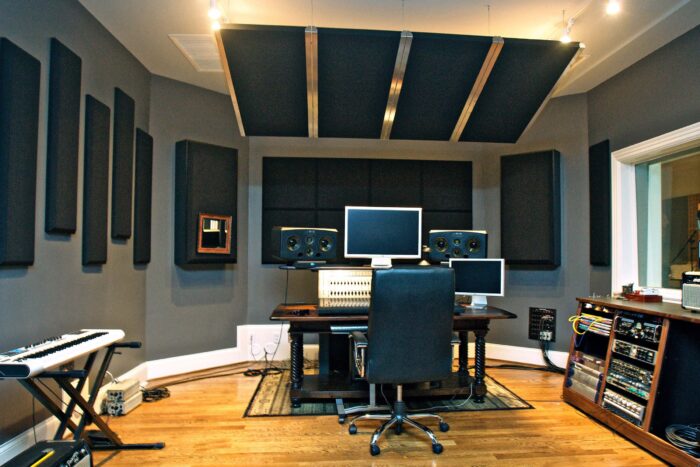
Ceiling clouds are a versatile acoustic solution that targets sound reflections originating from the ceiling. By hanging these clouds strategically, the studio can enhance acoustics by absorbing sound waves that tend to bounce off the ceiling. This absorption minimizes flutter echoes and further contributes to overall clarity in recordings. In a city where urban sounds and reverberations are inevitable, ceiling clouds provide an effective countermeasure, allowing recording engineers to capture clean and precise audio without the interference of unwanted ceiling reflections. As Chicago’s musical landscape continues to evolve, ceiling clouds offer a reliable solution to maintaining sonic excellence.
Tailoring Solutions to Chicago’s Vibes
Chicago’s musical history and diversity call for a unique approach to acoustic treatment. Jazz, blues, rock, and electronic music all have distinct sound characteristics, and the studio’s acoustic environment should complement these genres. Collaborating with an acoustic consultant experienced in the Chicago music scene can ensure that the studio’s vibe aligns with the acoustic design.
Embracing Technology
Advancements in technology have led to innovative solutions like adjustable acoustic panels and digitally controlled diffusers. These systems allow engineers to adapt the studio’s acoustics to suit different recording scenarios, making the space versatile and efficient.
Budget Considerations
Acoustic treatment can vary widely in cost, but it’s an investment that directly impacts the quality of your recordings. Balancing the budget while ensuring optimal sound quality requires careful consideration. Working closely with both acoustic consultants and studio designers can help find the right equilibrium.
Conclusion
In the heart of Chicago’s bustling music scene, the path to crafting a professional recording studio that resonates with excellence takes a dynamic turn. Beyond the glitz of cutting-edge gear and the artistry of musicians, lies a fundamental element often underestimated: acoustic treatment.
Chicago’s musical legacy, from blues to rock, calls for an acoustic canvas that harmonizes with its diversity. This journey starts by deciphering the unique characteristics of the studio space itself—its dimensions, materials, and acoustic intricacies. Guided by skilled acoustic consultants, these insights lay the groundwork for optimal solutions.
Bass traps, absorption panels, diffusers, isolation devices, and ceiling clouds emerge as the studio’s allies, each addressing distinct acoustic aspects.
Amid a city where music defines identity, choosing the right acoustic solutions for a recording studio becomes a quest to capture Chicago’s musical spirit in each note. It transforms the studio into a vessel where sonic aspirations and the city’s pulse fuse into a harmonious narrative, resonating with the essence of Chicago’s musical soul.


